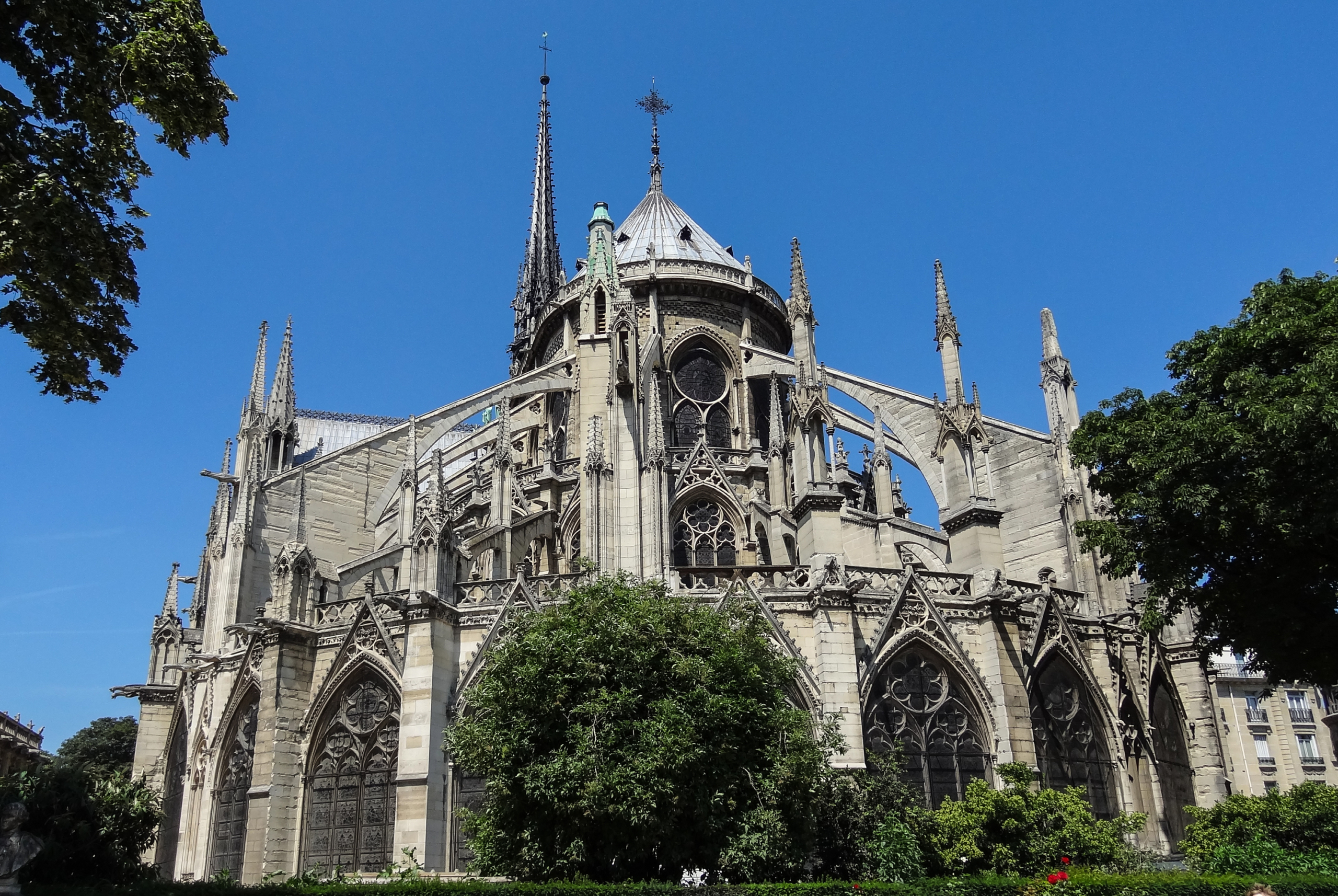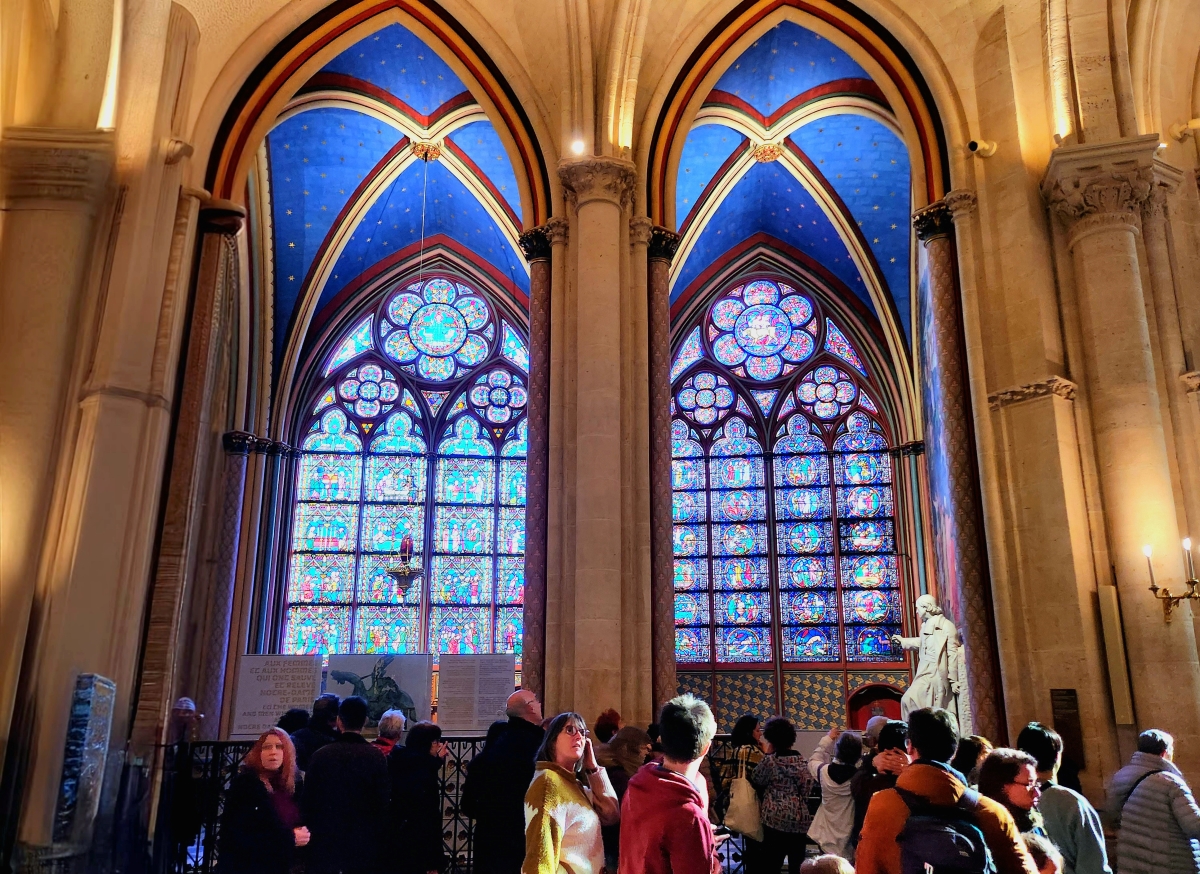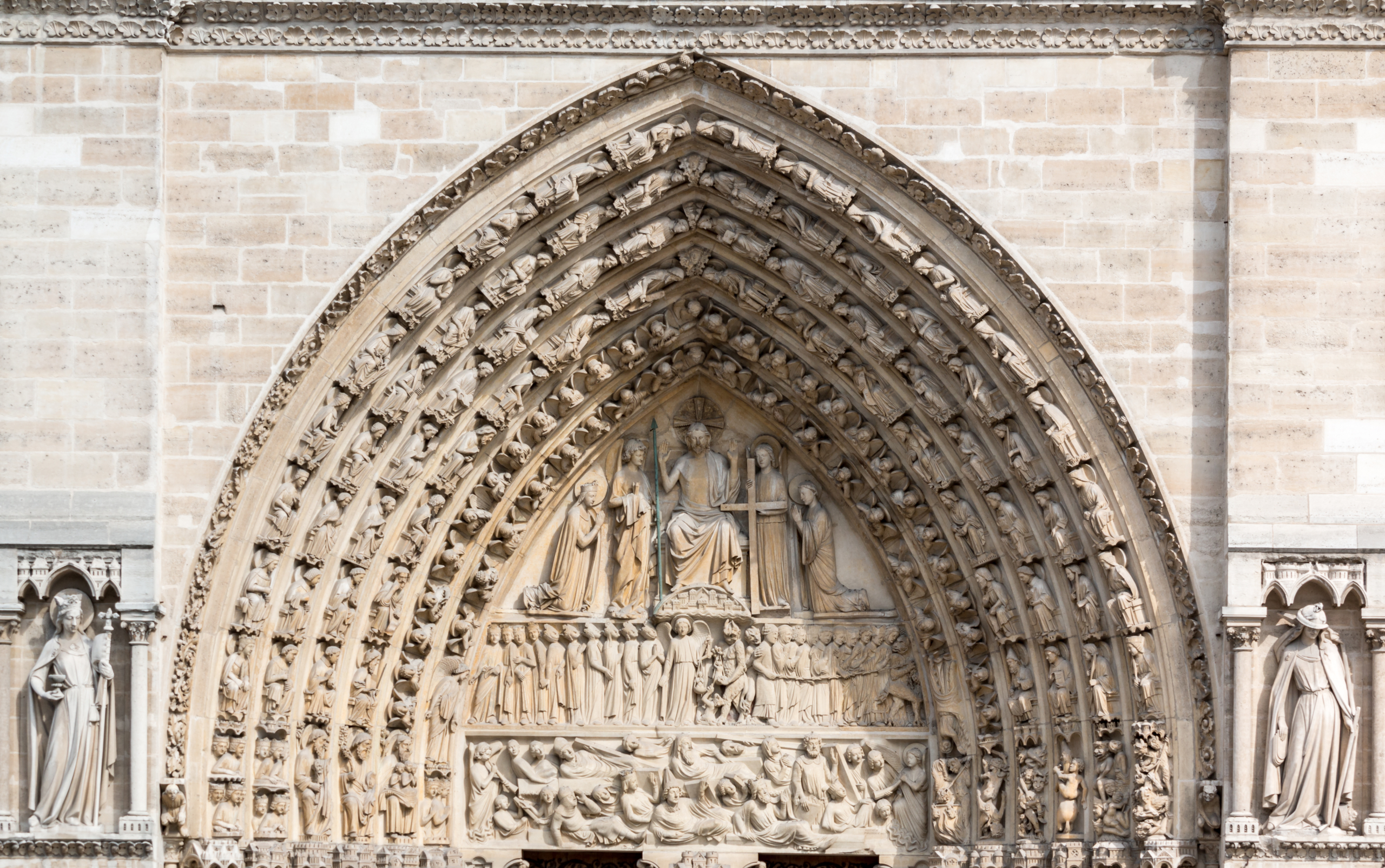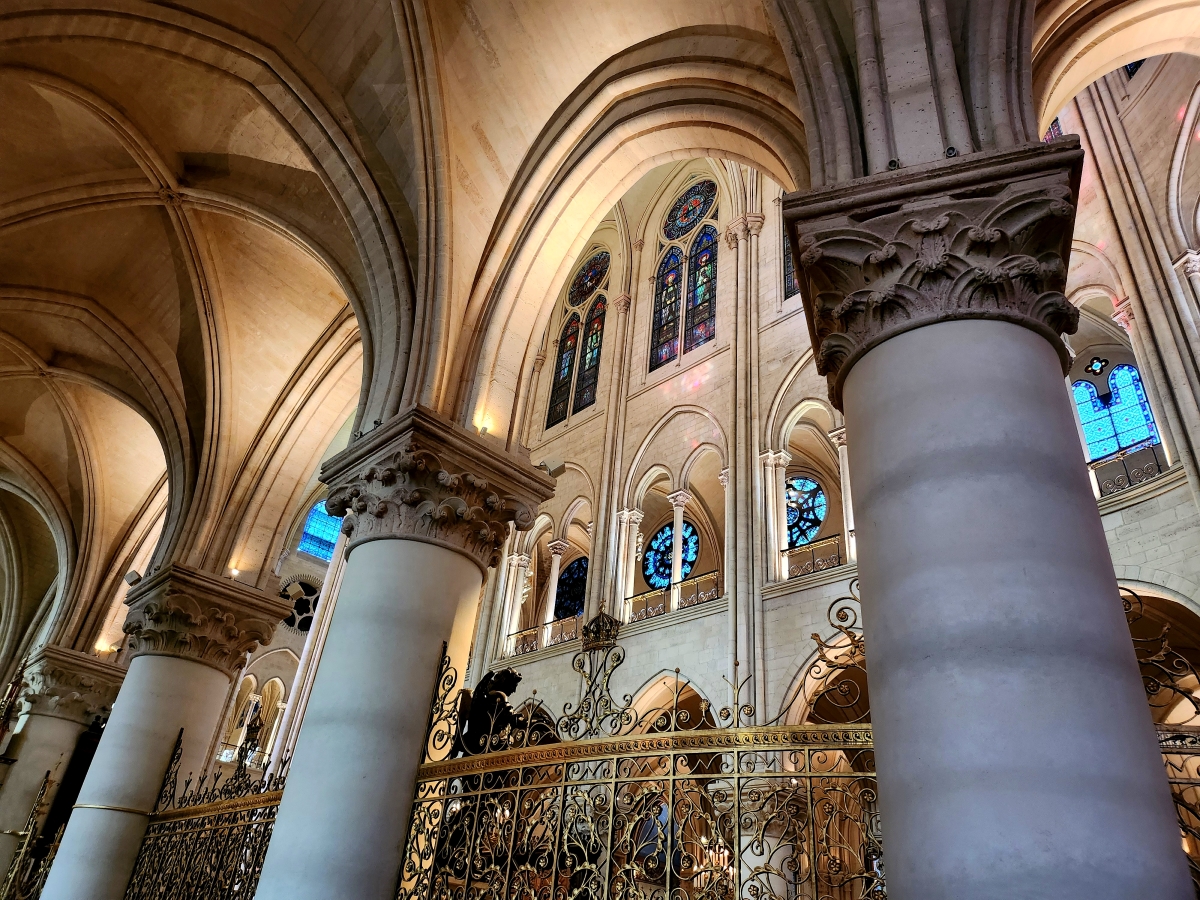

Please note: The photos in this post were taken prior to the April 2019 fire and the subsequent reconstruction and restoration of the cathedral, unless otherwise stated.
Since the Middle Ages, Notre-Dame Cathedral has been an integral part of Parisian life. Though its opulence seems to imply that its parishioners were once the likes of royalty, surprisingly the exact opposite was true: Notre-Dame has always been the “people’s cathedral.”
Set near the very center of the city on an island in the Seine River, Notre-Dame has withstood natural disasters, revolutions, and wars – a constant amid centuries of history. In 1163, Bishop Maurice de Sully demolished the small church that once stood in Notre-Dame’s place in order to build a larger, grander cathedral to accommodate Paris’s growing population. The project took nearly a hundred years to complete, and it’s not hard to imagine why; Notre-Dame bursts with ornate details, richly colored stained glass, carefully carved sculptures, and ingenious architecture.

Some of Notre-Dame’s flying buttresses can be seen here, supporting the apse. Image Source

The cathedral's open floor plan and soaring ceilings are made possible by architectural novelties like flying buttresses. (This photo was taken in 2025 after Notre-Dame's restoration.)
Notre-Dame pioneered the use of “flying buttresses,” a type of supportive arch that pushes against the outward thrust of tall walls. Previously, buildings could only achieve certain heights and sizes before walls became unstable due to lack of support. Thanks in large part to Notre-Dame, flying buttresses became a staple in Gothic architecture because they allowed buildings to achieve soaring heights and more open and dynamic interior areas. Notre-Dame’s flying buttresses resemble a ribcage surrounding the cathedral, with 30 “arms” reaching to reinforce the cathedral’s towering walls.

Notre-Dame’s iconic spire, or “flèche.”
Indeed, Notre-Dame’s flèche (the main spire) exists thanks to the support of flying buttresses. The wooden tower rests atop the four pillars of the cathedral’s transept (the cross-section of the church’s main building). This foundation – strengthened by flying buttresses – allows it to reach heights of about 315 feet, making it the tallest building in Paris until the Eiffel Tower was erected in 1889.

Interior of Notre-Dame Cathedral, with its richly colored stained-glass windows. (This photo was taken in 2025 after Notre-Dame's restoration.)

The west façade of Notre-Dame, depicting the Last Judgement. Image Source
Notre-Dame’s artistic details served two purposes: first, to showcase France’s prosperity, and second, to act as a “poor people’s book.” Since the majority of its first parishioners were illiterate, Notre-Dame integrated numerous religious scenes into its decoration. Throughout the cathedral, sculptures and stained glass illustrate Bible stories such as the Last Judgment, the temptation of Adam and Eve, the birth of Christ, and countless others. This imagery allowed the average citizen to learn from the Bible without needing to know how to read.

The north rose window of Notre-Dame Cathedral. (This photo was taken in 2025 after Notre-Dame's restoration.)

Close-up of the north rose window. Image Source
Stained glass windows cover almost 1,100 square feet of the cathedral’s surface, providing ample illustrations of the sermons preached at the pulpit. The immense rose windows crowning the church’s three main portals are perhaps the most striking. The north rose window (pictured above) is the largest and contains most of its original 13th-century glass, portraying Virgin Mary and the Christ Child surrounded by kings and prophets from the Old Testament.

Blazes engulfing the wooden roof of Notre-Dame during the 2019 fire. Image Source
On April 15, 2019, a massive fire destroyed the cathedral’s wooden spire and most of its oak roof. It is thought that the cause of the fire was related to ongoing renovation work. Thanks to strategic firefighting by local authorities, the main structure of the cathedral was saved, though debris and water caused extensive damage to both the exterior and interior of the cathedral.
The French government vowed to restore the church in just five years – a goal that was considered ambitious by most of the world. However, with the aid of 2,000 international workers, architects, artists, archaeologists, and other specialist craftspeople, the “people’s cathedral” was lovingly and painstakingly cleaned, rebuilt, and returned to its former glory, reopening to the public on December 8, 2024. If you'd like to read more about the reconstruction of Notre-Dame Cathedral after the April 2019 fire, we recommend reading this article from National Geographic: Everything you need to know about the reopening of Notre Dame.

Both the interior and exterior of the cathedral were thoroughly cleaned after the fire, uncovering sparkling white stone beneath centuries of dirt and dust. (This photo was taken in 2025 after Notre-Dame's restoration.)
You can see Notre-Dame for yourself during your free time on our Essential France: Provence to Paris, European Tapestry, and Provincial French Countryside tours (be sure to include the optional post-tour extension for extra time on your own in Paris as well). To reserve your spot on tour, submit an online reservation request; we’d be delighted to have you join us.
By using this website you are agreeing to our Cookie Policy.